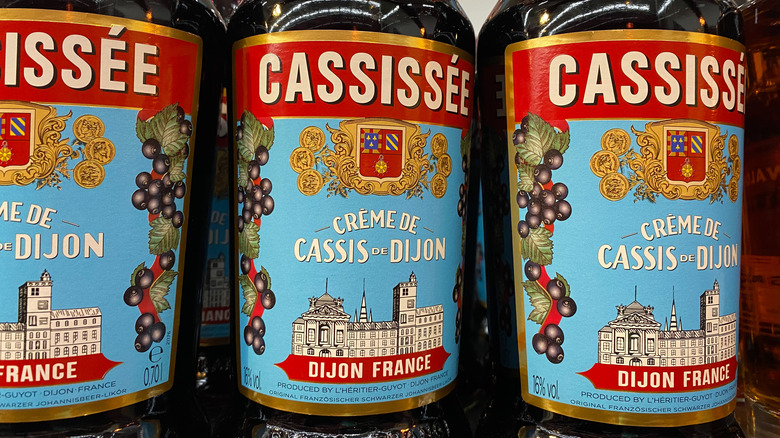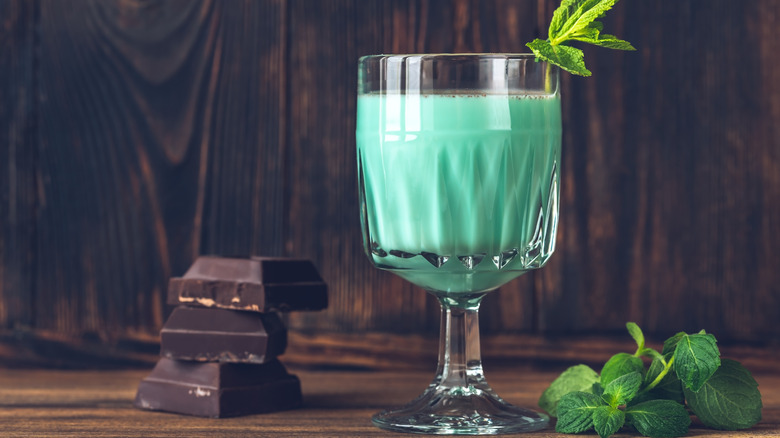Does Créme De Cassis Liqueur Contain Dairy?
Crème de cassis is one of those old-school liqueurs you don't see too often anymore, unless you're hanging out at an exceptionally well-stocked bar. It's a purple-hued French liqueur made from macerated blackcurrants, which are a type of berry that resemble sort of a cross between a blueberry and a tiny concord grape. You're likely familiar with the word "crème" in the French usage meaning "cream", as in crème fraîche; but if you've ever tried a liqueur with the word crème in its name, you'll notice that it isn't actually creamy.
That's because the word "crème" carries a double-meaning in French. Not only does it mean "creamy," it's also the term used for sweet liqueurs, ones that have a lot of sugar added to the point where they pour thickly and drink richly. Crème liqueurs must contain alcohol, at least 250 grams of sugar per liter, and some kind of flavoring as well. These aren't to be confused with cream liqueurs, which do in fact have dairy cream in them; such as Irish cream, for example. Crème de cassis' sugar content is particularly notable in that a regulated version from Dijon, France, needs to contain 400 grams of sugar in it (as well as the variety of blackcurrant known as Noir de Bourgogne).
There are a wide variety of crème liqueurs
Crème liqueurs aren't limited to blackcurrant, however. Other common versions include crème de cacao (chocolate), crème de noyaux (almond), and crème de menthe (mint). Both crème de menthe and crème de cacao are used in a Midwestern classic cocktail, the Grasshopper, which is a creamy chocolate-mint dessert drink. They taste gloriously like Shamrock Shakes and are delicious, by the way.
Then there's crème de violette, which is violet-flavored. Crème de violette is notable for its usage in the Aviation cocktail, which also has gin and lemon juice in it; and these two components accent the floral nature of the violet. But all of these liqueurs can be sipped on as-is, and they're ones I'd recommend you don't rush, mostly because they're like drinking a dessert due to their high levels of sugar. That's why they're often used in cocktails as supporting ingredients rather than starring ones.

